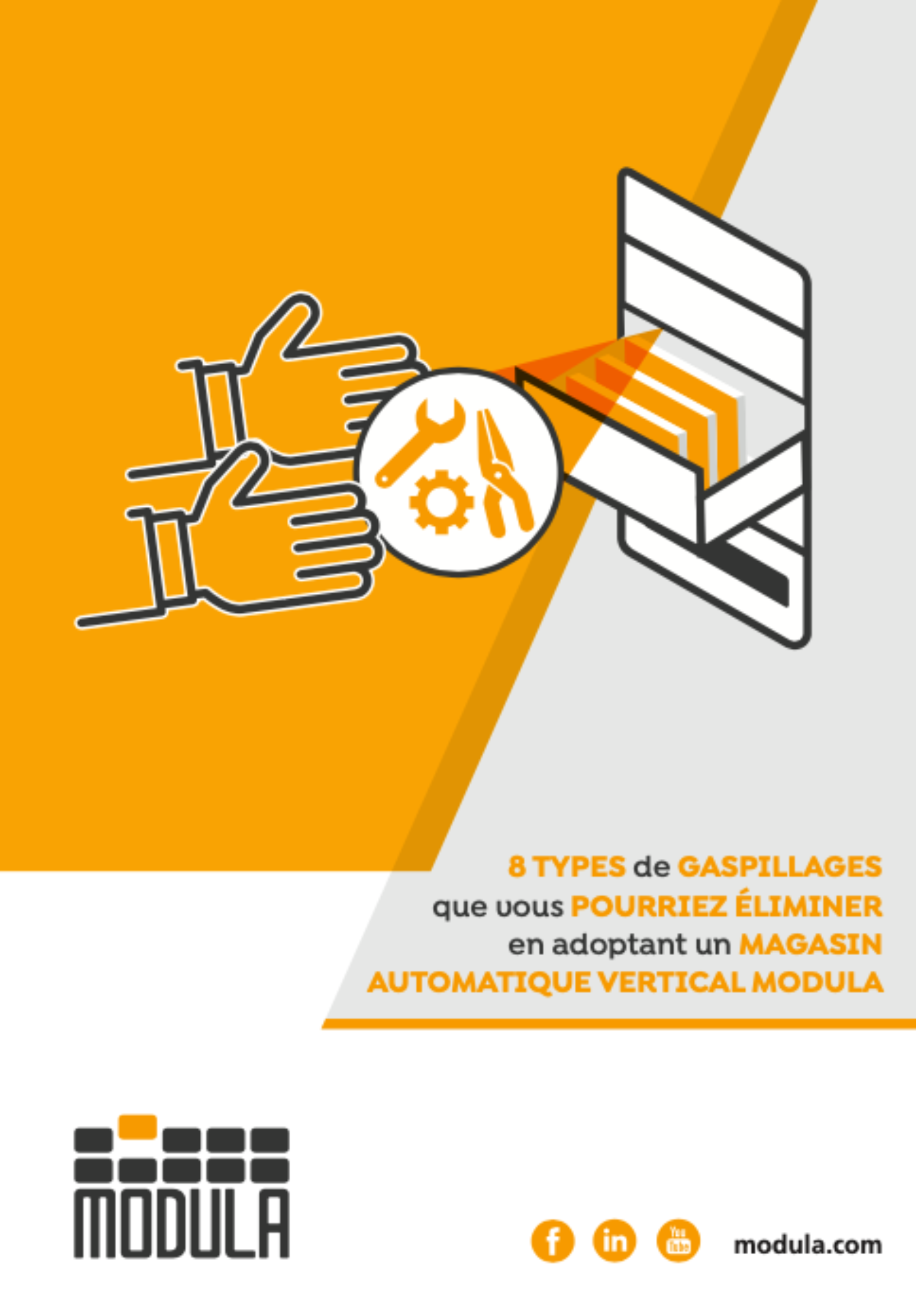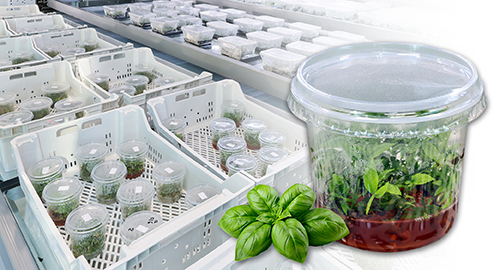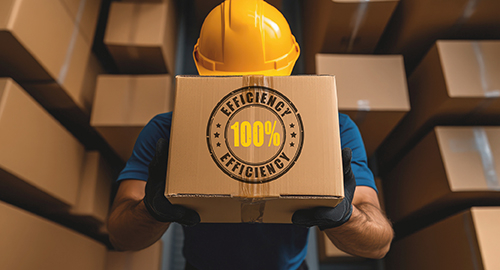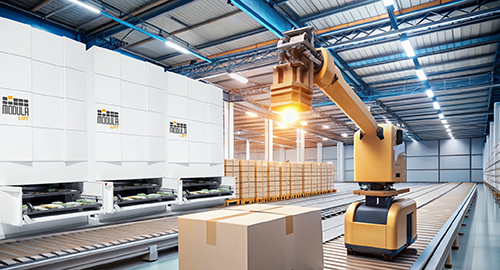Have you ever bought a new device and found everything you need – charger, cable, manual – neatly packed together in the same box? That’s exactly what kitting is about.
In logistics, kitting refers to an inventory management method where related products are bundled and shipped as one complete package. This practice helps increase order accuracy, streamline picking activities, and make better use of both space and labor, turning it into a key efficiency driver in warehouse operations.
For businesses, implementing kitting can translate into higher revenue, lower operational costs, and improved customer experience.
In this guide, you will learn:
- the most common kitting approaches used in warehouses
- the step-by-step workflow behind preparing kits
- how Modula’s automated kitting solutions can bring even greater optimization to your warehouse processes
What does kitting mean in a warehouse?
Kitting in warehousing (sometimes called product kitting or inventory kitting) is the practice of grouping separate but related SKUs into a single package that is stored, picked, and shipped as one unit.
Some typical use cases are:
- A set of screws, bolts, and tools packaged together to assemble furniture
- A laptop sold together with its charger and essential peripherals
- A medical kit containing all instruments required for a specific surgical procedure
By preparing kits in advance, warehouses can streamline the fulfillment process: workers have fewer SKUs to pick per order, which speeds up operations, minimizes handling mistakes, and ultimately improves efficiency.
At its core, kitting means grouping related stock-keeping units (SKUs) into a single package and shipping them together as a ready-to-pick kit. This approach streamlines order fulfillment by reducing the number of individual items pickers need to handle.
Kitting vs. Bundling: key distinctions
Although the terms are sometimes confused, kitting and bundling are not the same.
- Kitting: Separate but complementary products are pre-packed into one kit and treated as a single unit during storage, picking, and shipping.
- Bundling: A sales tactic where different products are marketed and sold together, often at a promotional or discounted price, to encourage customers to purchase more than they might otherwise.
In short, kitting is an operational process in the warehouse, while bundling is primarily a marketing and pricing strategy.
Kitting vs. Assembly
Both kitting and assembly play a role in logistics, but their purposes differ.
- Kitting: Involves collecting and packaging complementary items into a single set, typically to make order fulfillment faster or to prepare components for the next production step.
- Assembly: Goes beyond grouping items — it is the act of physically combining separate parts to produce a finished, functional product.
In other words, kitting prepares components, while assembly turns those components into the end product.
Common types of kitting in warehousing
Different forms of kitting are applied in warehouses and manufacturing facilities, depending on the goal of the operation:
- Order kitting: Products for a specific customer purchase are collected and packed together as one kit to speed up fulfillment. Example: preparing a package with a laptop, keyboard, mouse, and charger for a customer who ordered a computer set.
- Assembly kitting: Components required for production are grouped into kits so that assembly lines always have what they need. Example: creating kits with screws, bolts, and washers to simplify furniture assembly.
- Promotional kitting: Items are packaged into kits for marketing campaigns or special offers. Example: combining a product sample with a discount voucher as part of a promotional giveaway.
- Replenishment kitting: Kits are put together to make restocking specific locations more efficient. Example: preparing a kit of cleaning materials to quickly refill janitorial closets across a facility.
- Subscription box kitting: Products are curated and packaged for recurring subscription models. Example: monthly boxes with beauty items, snacks, or lifestyle products tailored to customer preferences.
The warehouse kitting process: step by step
So, what does kitting actually look like in practice? Here’s how the process usually works:
1. Select the items for the kit
The first step is deciding which SKUs will be grouped together. Your choice should align with business goals and customer needs. Data analysis is especially useful here, as it highlights which products are frequently purchased together.
Consider these scenarios:
- Want to boost sales or respond to seasonal demand? Combine products that are typically purchased together, because this allows you to tap into customers’ natural purchasing habits and take advantage of existing peaks in demand.
- Looking to raise average order value? Pair new products with fast-moving items, because associating them with items that are already in high demand increases the likelihood that customers will try an additional product, thereby increasing the average receipt value.
Need to reduce excess stock? Dispose of slow-moving items by including them in kits with more popular and fast-selling products, as this reduces the risk of obsolescence and turns unsold items into sales opportunities.
2. Decide who will build the kits
Kits can be assembled by your own warehouse staff or outsourced to a third-party logistics (3PL) partner.
- In-house kitting: Gives you more control over speed and quality but requires labor and resources.
- 3PL kitting: Saves time and reduces labor costs, but may limit oversight and flexibility.
3. Assign a new SKU for each kit
Once a kit is assembled, it should be given a dedicated SKU. This simplifies tracking, storage, labeling, and inventory monitoring since you only need to manage the kit as a single product rather than keeping tabs on each item separately.
4. Pick and assemble the kit
At this stage, warehouse staff gather the SKUs needed to put the kit together.
Tools such as warehouse management systems (WMS), barcode scanners, and picking carts make it easier for operators to find the correct storage locations and ensure accuracy. Depending on the setup, workers may use piece picking or case picking to collect the required items before pre-assembling them into kits for storage.
In facilities equipped with automation, automated storage and retrieval systems (ASRS) can streamline the process even further by batch-picking multiple kits into totes or bins, reducing manual handling.
5. Ship the kits to customers
Once an order is placed, the prepared kits can be shipped as a single unit. This not only speeds up the fulfillment process but also helps lower shipping costs by consolidating items into one package instead of multiple shipments.
Benefits of kitting in a warehouse
Kitting offers a wide range of advantages that can significantly improve warehouse efficiency and profitability. From optimizing storage capacity to boosting sales, here are the key benefits:
- Maximizes warehouse space
By consolidating multiple SKUs into a single kit, businesses can store items more efficiently, reducing the footprint needed for storage. This not only frees up floor space but can also delay or eliminate the need to move into a larger, more expensive facility.
Tip: Looking for more strategies to free up room? Check out our guide to warehouse organization and space optimization. - Shortens picking and travel time
One of the biggest time sinks in warehouse operations is traveling between aisles to locate products. With pre-assembled kits, operators no longer have to search for and pick several individual items for each order. Instead, they only need to grab the ready-made kit and head directly to packing or shipping, making order fulfillment much faster and less error-prone. - Lowers packing and shipping costs
Shipping expenses continue to rise, making cost control a top priority for logistics managers. Kitting allows businesses to combine multiple items into a single package rather than sending them separately. This reduces packaging material, filler, tape, and carton usage, while also lowering freight charges by consolidating shipments. - Increases sales and average order value
Kitting isn’t just an operational tool—it’s also a proven sales driver. Bundled offers, such as a travel kit of essentials or a shampoo-and-conditioner set, can make products more appealing and encourage customers to spend more. Research from the University of London even found that buyers are especially motivated by BOGO (buy-one-get-one) promotions when the word “free” is used. By offering kits, businesses can boost both sales volume and average order value (AOV)—a crucial metric for revenue growth. - Moves slow-moving inventory
Excess stock ties up capital, clogs storage, and can even lead to losses if perishable items expire. Kitting provides a smart way to clear out sluggish inventory by pairing it with popular, fast-moving products. This approach helps reduce overstock while still driving value from items that might otherwise sit untouched.
How to automate warehouse kitting with Modula’s automated equipment
Kitting delivers major efficiency gains in a warehouse, but when done manually it can still be time-consuming, labor-intensive, and error-prone. Operators often need to walk long aisles, locate individual SKUs, and physically assemble kits — a process that slows down fulfillment and increases the risk of mistakes.
That’s where Modula’s automated storage and retrieval solutions come in. Our advanced systems are designed to optimize storage density, improve picking accuracy, and streamline the kitting process, resulting in lower operating costs, faster fulfillment, and higher customer satisfaction.
Modula Vertical Lift Modules (VLMs):
Traditional static shelving takes up excessive floor space and forces employees to travel throughout the warehouse to retrieve items. Modula’s vertical lift modules transform this process by automatically delivering SKUs directly to the operator. With a quick barcode scan or a touch on the intuitive Copilot controller, items arrive at the workstation ready for kit assembly.
Our VLM lineup includes:
- Modula Lift: The best-selling solution that can cut storage space by up to 90% while improving speed, accuracy, and picking efficiency.
- Modula Slim: A compact option that offers the same advanced storage technology as the Lift but in a smaller footprint — perfect for facilities with limited space.
- Modula Climate Control & Clean Room: Designed for sensitive materials that require controlled environments, protecting inventory from contaminants and temperature fluctuations.
- Modula Next: A VLM that merges high-density storage with the precision and control of industrial vending, ideal for environments requiring strict access and usage tracking.
- Modula Flexibox: Capable of processing up to 180 bins per hour, this solution is built for high-throughput industries where speed and flexibility are essential.
By integrating Modula’s vertical lift modules, warehouses can reduce labor demands, minimize picking errors, and optimize kitting operations — all while maximizing valuable floor space.
Modula Horizontal Carousels
For warehouses with low ceiling heights or limited vertical space, Modula’s horizontal carousels provide the perfect alternative to vertical systems. These carousels use bins mounted on an oval-shaped track that rotates horizontally. When a picker requests an item, the carousel automatically brings the correct bin to the access point, ensuring fast, accurate, and ergonomic picking. By storing kitted items in horizontal carousels, warehouses can achieve high-speed picking performance while maintaining precision and reducing operator travel time. One of the biggest advantages of Modula’s horizontal carousels is their adaptability. Shelf spacing can be easily reconfigured, allowing you to adjust storage layouts for your kitted items based on seasonal demand or shifting product mixes. To further enhance performance, these systems integrate with visual picking aids such as Put to Light technology and barcode scanners, helping operators reach up to 99% accuracy while reducing errors and training time.
Modula Warehouse Picking Solutions
When paired with Modula’s automated storage and retrieval systems (AS/RS), our picking solutions ensure that every kitted item is quickly located and accurately retrieved.
Whether your goal is to minimize picking errors, handle seasonal spikes in demand, or simply improve day-to-day efficiency, Modula’s picking technologies provide a significant boost in both speed and accuracy. Designed to be easy to install and simple to use, these solutions are perfectly suited for enhancing batch picking and multi-order fulfillment, making your warehouse operations more streamlined and reliable. To complement your automated storage and retrieval systems, Modula offers a range of order picking tools designed to speed up fulfillment and improve accuracy:
- Modula Picking Cart – A flexible solution for transporting inventory between different warehouse zones quickly and efficiently.
- Mobile Picking Station – Ideal for handling high-volume orders, enabling operators to process large batches in less time.
- Modula Put to Light – A visual guidance system that directs employees to the correct picking location or workstation, reducing errors and training time.
- Modula Mobile Picking App – A user-friendly mobile application that allows you to monitor and manage picking operations from a tablet or smartphone, providing real-time visibility and control.
By integrating these tools with Modula’s AS/RS systems, warehouses can achieve faster, more accurate, and more flexible order fulfillment.
Modula Warehouse Management
Keep complete visibility of your kitted inventory—whether you’re on-site at the warehouse or managing operations remotely. At Modula, we deliver advanced warehouse management, analytics, and remote support solutions that give you real-time control over your storage and fulfillment activities.
Our systems are easy to implement and designed to integrate seamlessly with existing ERP, MRP, WMS, and DMS platforms, ensuring smooth connectivity across your entire supply chain. With Modula’s warehouse management solutions, you can track, monitor, and optimize inventory performance with confidence.
At Modula, we provide two tailored Warehouse Management System (WMS) options to suit different operational needs:
- Modula WMS Base – Perfect for growing warehouses or businesses looking for a scalable foundation to support future expansion.
- Modula WMS Premium – A comprehensive, end-to-end solution that delivers full control over warehouse operations.
Our advanced WMS platforms are designed to deliver:
- Complete inventory visibility and control from inbound to outbound
- Exceptional accuracy and efficiency in both picking and replenishment activities
- High-level automation that eliminates labor-intensive, paper-based, and manual workflows
Wrapping Up: kitting in the warehouse
Kitting is a powerful strategy for streamlining warehouse operations, helping businesses cut waste, speed up order fulfillment, and deliver a smoother customer experience.
From preparing parts for production to bundling products for retail, kitting simplifies workflows and reduces complexity. When paired with automation, the benefits multiply—greater efficiency, accuracy, and scalability. At Modula, we provide a full range of automated storage and picking solutions designed to make warehouse kitting faster, smarter, and more reliable.
Is it time to optimize your kitting process? Discover how Modula can help transform your warehouse operations.
8 types of waste that Vertical Lift Modules can eliminate





